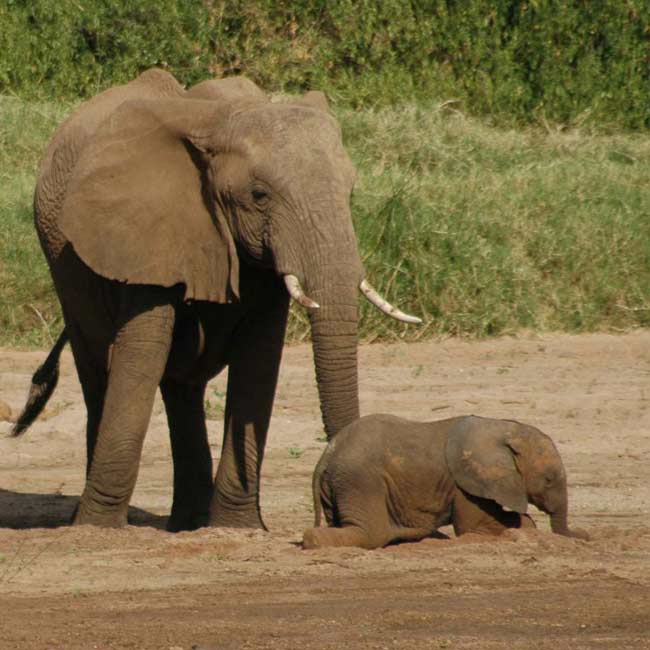Elephant Tails Tell Tale of Diet, Migration

By plucking hairs from elephant tails, scientists have determined just what the pachyderms like to eat.
Researchers combined this dietary information with tracking data from Global Positioning System (GPS) collars to show that an elephant's diet changes as it migrates.
Different plants produce different ratios of carbon isotopes, which accumulate in an animal's body—particularly in hair. The isotope ratio of an animal's hair can therefore reveal what it has consumed.
In tropical regions, trees and shrubs undergo one type of "carbon fixation" during photosynthesis and produce a different ratio of carbon isotopes than grasses and crop plants.
As elephants digest these plants, some of the isotopes end up in their foot-long tail hairs. About half the total isotopes in each hair comes from the food the elephants ate the day before, said study author Thure Cerling of the University of Utah.
"The other half is the long term average diet," Cerling said. "It's like a tape recorder—it's locked in and doesn't change after that."
By coupling the data from the tail hairs of seven African elephants with two years worth of tracking information from GPS collars, Cerling and his colleagues showed that the main focus of the elephants' diets changed as they moved around.
Sign up for the Live Science daily newsletter now
Get the world’s most fascinating discoveries delivered straight to your inbox.
For the first month of each of the year's two rainy seasons, the elephants—of which six of the seven lived in the Samburu National Reserve in Kenya—munched mainly on grasses.
During the rest of the year, when it's generally drier and grasses are less plentiful, these elephants moved to other areas in the reserve to dine on trees and shrubs.
The seventh elephant, which was roaming outside the reserve on its own, ranged farther and showed considerably more grasses in its diet than the other six, suggesting it made frequent forays into crop fields.
Crop raiding is a major problem with elephants in both Africa and Asia, and farmers and scientists are trying to keep crop raiding elephants away using chili peppers and sex pheromones.
Determining where elephants roam, and why they go there, could help prevent deadly interactions.
"The human/elephant conflict is that they both want to occupy the same land," Cerling said. "If humans and elephants are going to coexist, you need to know how much space elephants need, and why they move. A lot of them do move, and for some of them, it certainly appears, it could have to do with food."
The research is detailed Jan. 2 in the online journal The Proceedings of the National Academy of Sciences.









